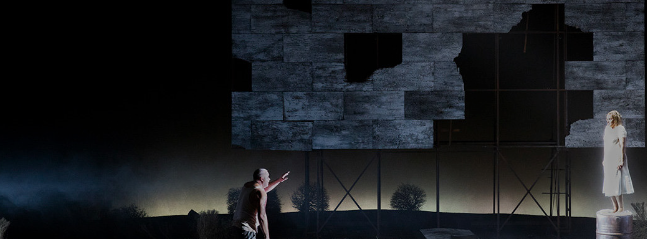Photo credit: Chris Christodoulou
Shostakovich Festive Overture - Mahler Symphony No. 5
On the 150th anniversary of the Royal Albert Hall, Covid left its mark on the 2021 Proms with uncertainty over international travel resulting in a necessary Celebration of the wealth of British artists talent and ensembles.
The inclusion of Mahler’s Symphony No. 5 resulted in the creation of a Proms Festival Orchestra consisting exclusively of freelance orchestral players. This certainly highlighted the difficulties freelance musicians had faced over the pandemic period when nearly all performances were cancelled. This orchestra was lucky enough to have the wonderful musicianship of the conductor Mark Wigglesworth who has himself conducted some of the top orchestras around the world as well as having recorded performances of Mahler’s Sixth and Tenth Symphonies.
The evening started well with a pacy account of Shostakovich’s outstanding Festive Overture which was written by him in a few days in November 1954 to celebrate the 37th anniversary of the Russian Revolution. This Festive Overture was indeed everything that a curtain-raiser should be: fast, rhythmic, noisy and fun.
But then the orchestra had to come to terms with the really serious stuff – the emotionally charged and challenging Symphony No. 5.
Mahler’s work is very often inextricably linked to his personal life and as the first movement opens, there is an unmistakable menace of a deadly Funeral March. At the beginning of 1901, Mahler had faced serious medical issues. He had resigned from his post as conductor of the Vienna Philharmonic and received some poisonous and anti-Semitic press as a result. As the second and third movements proceed, however, the mood changes, as he meets his future wife and falls passionately in love. The resulting famous fourth movement, the Adagietto, is followed by a vigorous and joyous finale full of happiness, hope and faith for the future as the second movement Brass Chorale returns.
This incredible work is complicated enough for the greatest of orchestras and conductors. The recognition of this monumental work is not just centred in the brass sounds but overwhelmingly in the strings - particularly in the Adagietto. And here perhaps unsurprisingly the orchestra was not quite able to reach the climax demanded by Mahler for this piece.
It takes years for the greatest orchestras to find the depth and quality of sound necessary for this work. How difficult that must have been for the most talented of freelancers coming together for the first time with the magnetic leader being Magnus Johnston. An almost impossible task but one which they met with determination and resilience. The complexity of the music never really defeated them and Wigglesworth saw them through the most difficult passages. Perhaps the fourth movement was ever so slightly rushed but as the Brass Chorale reappeared in the fifth movement and the cheers from the promenaders filled the Royal Albert Hall as the last note was played, there must have been a triumphant smile on the lips of all the musicians, that they had indeed played and conquered one of the greatest works ever written.


